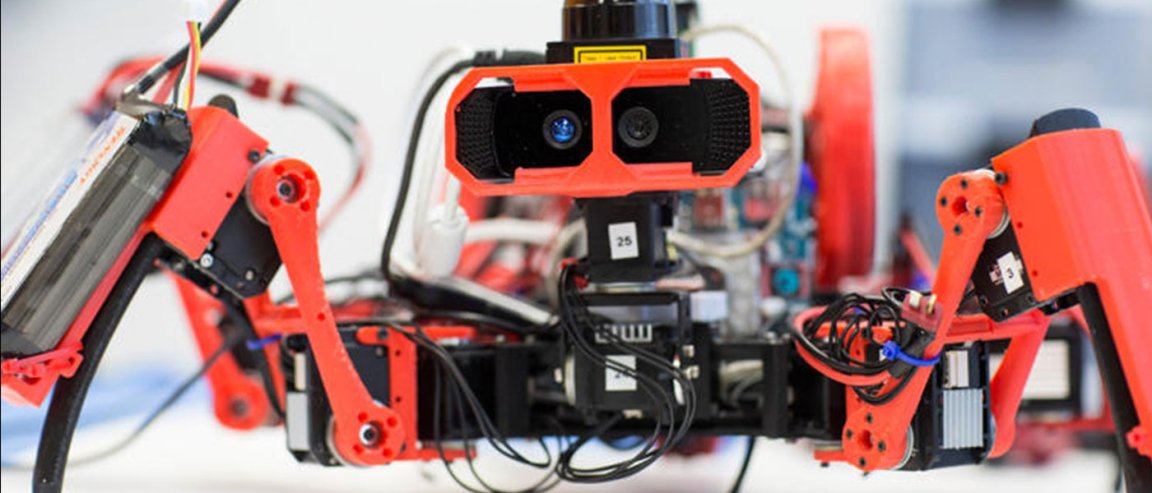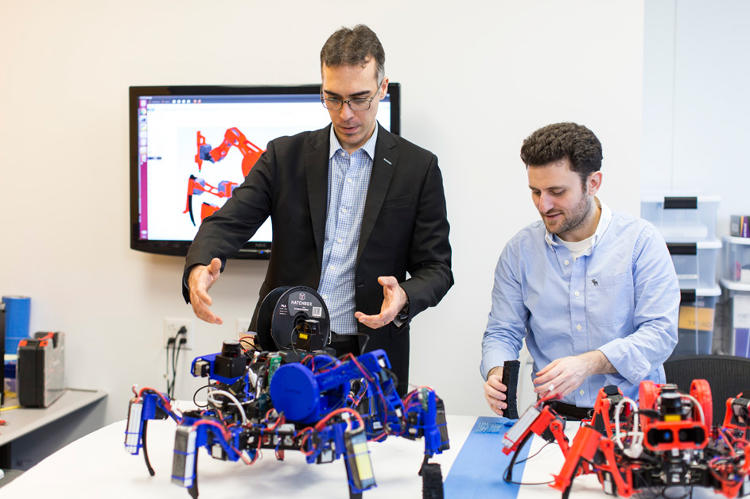
Mobile Autonomous Manufacturing
Siemens Spiders, or SiSpis, are 3D printers on the move. Oh, and did we mention they can collaborate with each other?
Livio Dalloro, head of the Product Design, Modeling and Simulation Research group in the Automation and Control Technology Field at Siemens Corporate Technology, is building an army of spider robots equipped with artificial intelligence so they can communicate and collaborate with each other in building things, a new system they are referring to as “mobile manufacturing.”
Each spider uses a camera and laser scanner that allows it to map and effectively navigate its environment, finding ways to move around obstacles in its path.

“Its goal was to create a prototype platform for autonomous manufacturing machines that can understand a task, split it up among available robots, and enter into a manufacturing process in a collaborative and coordinated way without explicit programming,” Dalloro explains.
The Sispis work together with each of them being assigned a certain area to build on. They communicate so that there are no duplicate workers for each area, and such that when one spider needs to recharge, it will automatically go to a charging station after signaling a fully charged spider to take its post. The substitute spider then knows picks up where the exhausted spider left off.
SiSpi Armies of the Future
Several industries have been exploring the use of autonomous robots in collaborative teams for a common objective. Siemens is also in on this venture.
“SiSpis are part of a larger picture that we define as Siemens Agile Manufacturing Systems (SiAMS) and they represent the core of our autonomous systems research here in Princeton,” says Dalloro. “We are looking at using multiple autonomous robots for collaborative additive manufacturing of structures, such as car bodies, the hulls of ships and airplane fuselages,” he adds.
The robots are run by a hybrid between Siemens’ software NX and Robot Operating System (ROS), and are equipped with extruders like those in traditional 3D printers, making them limited to using poly lactic acid.
But Hasan Sinan Bank, the Siemens engineer who first proposed the idea of the autonomous robot team, says the technology just needs to be developed further: “Once the technology becomes mature, it could be applied to almost anything.”